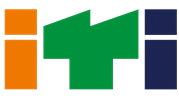The syllabus consists of four units: (i) Data Handling using Pandas and Data Visualization, (ii) Database Query using SQL, (iii) Introduction to Computer Networks, and (iv) Societal Impacts.
Distribution of Marks
| # | Unit Name | Marks |
| 1 | Data Handling using Pandas and Data Visualization | 30 |
| 2 | Database Query using SQL | 25 |
| 3 | Introduction to Computer Networks | 7 |
| 4 | Societal Impacts | 8 |
| Total | 70 |
Unit 1: Data Handling using Pandas and Data Visualization
Data Handling using Pandas - I
Introduction to Python libraries - Pandas, Matplotlib.
Data structures in Pandas - Series and Data Frames.
Series: Creation of Series from - ndarray, dictionary, scalar value; mathematical operations; Head and Tail functions; Selection, Indexing and Slicing.
Data Frames: creation - from dictionary of Series, list of dictionaries, Text/CSV files; display; iteration; Operations on rows and columns: add, select, delete, rename; Head and Tail functions; Indexing using Labels, Boolean Indexing; Joining, Merging and Concatenation.
Importing/Exporting Data between CSV files and Data Frames.
Data handling using Pandas - II
Descriptive Statistics: max, min, count, sum, mean, median, mode, quartile, Standard deviation, variance.
DataFrame operations: Aggregation, group by, Sorting, Deleting and Renaming Index, Pivoting.
Handling missing values - dropping and filling.
Importing/Exporting Data between MySQL database and Pandas.
Data Visualization
Purpose of plotting; drawing and saving following types of plots using Matplotlib - line plot, bar graph, histogram, pie chart, frequency polygon, box plot and scatter plot.
Customizing plots: color, style (dashed, dotted), width; adding label, title, and legend in plots.
Unit 2: Database Query using SQL
Math functions: POWER (), ROUND (), MOD ().
Text functions: UCASE ()/UPPER (), LCASE ()/LOWER (), MID ()/SUBSTRING ()/SUBSTR (), LENGTH (), LEFT (), RIGHT (), INSTR (), LTRIM (), RTRIM (), TRIM ().
Date Functions: NOW (), DATE (), MONTH (), MONTHNAME (), YEAR (), DAY (), DAYNAME ().
Aggregate Functions: MAX (), MIN (), AVG (), SUM (), COUNT (); using COUNT (*).
Querying and manipulating data using Group by, Having, Order by.
Operations on Relations - Union, Intersection, Minus, Cartesian Product, JOIN
Unit 3: Introduction to Computer Networks
Introduction to networks, Types of network: LAN, MAN, WAN.
Network Devices: modem, hub, switch, repeater, router, gateway
Network Topologies: Star, Bus, Tree, Mesh.
Introduction to Internet, URL, WWW and its applications- Web, email, Chat, VoIP.
Website: Introduction, difference between a website and webpage, static vs dynamic web page, web server and hosting of a website.
Web Browsers: Introduction, commonly used browsers, browser settings, add-ons and plug-ins, cookies.
Unit 4: Societal Impacts
Digital footprint, net and communication etiquettes, data protection, intellectual property rights (IPR), plagiarism, licensing and copyright, free and open source software (FOSS), cybercrime and cyber laws, hacking, phishing, cyber bullying, overview of Indian IT Act.
E-waste: hazards and management.
Awareness about health concerns related to the usage of technology
Syllabus for Class
- 4 views
